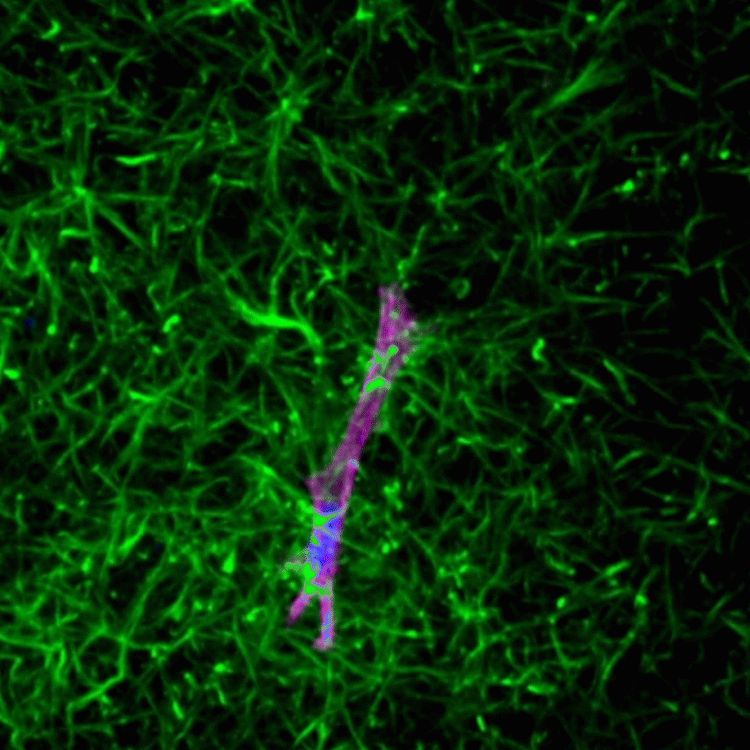The Creatures Crawling Within
Research Quick Pics
No, it’s not a gummy bear come-to-life. This creepy-crawly creature is actually a type of cell called a fibroblast. These cells are found throughout the body and travel to sites of injury to help heal wounds. NIDCR staff scientist Andrew Doyle, PhD, and colleagues in the lab of Ken Yamada, MD, Ph.D., recently used live-cell imaging to capture fibroblasts in action. The video above shows a fibroblast crawling through a web of proteins in a lab dish meant to mimic its 3-D environment in the human body.
The scientists found that fibroblasts use a “front wheel drive” method to propel themselves forward. First, the cell extends the front part of its membrane like an arm, slightly deforming the protein web and grabbing onto it for traction. This effectively opens up a path that allows the cell to use muscle-like contractions to pull the rest of itself forward. The fibroblast continues this process—much like clearing a path through dense vegetation—to move through its environment.
In contrast, the team found that cancer cells use different mechanisms to migrate through the same environment. A better understanding of these differences could shed light on ways to thwart invasion and spread of cancers, including those of the neck and head. The findings were published recently in Developmental Cell.
Reference
3D mesenchymal cell migration is driven by anterior cellular contraction that generates an extracellular matrix prestrain. Doyle AD, Sykora DJ, Pacheco GG, Kutys ML, Yamada KM. Dev Cell. 2021 Mar 22;56(6):826-841.e4. doi: 10.1016/j.devcel.2021.02.017. Epub 2021 Mar 10. PMID: 33705692.
Attention Editors
Reprint this article in your own publication or post to your website. NIDCR News articles are not copyrighted. Please acknowledge NIH's National Institute of Dental and Craniofacial Research as the source.
Subscribe for NIDCR Updates
Receive email updates about the latest advances in dental, oral, and craniofacial research.
October 2024

